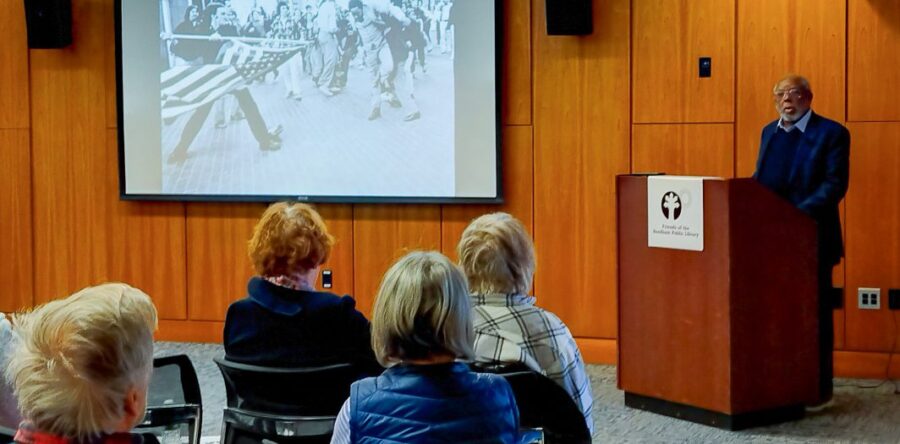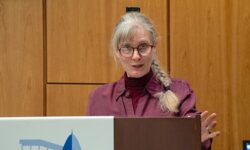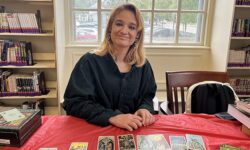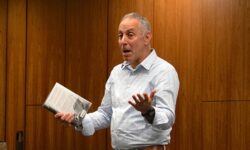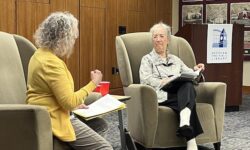By Audrey Anderson
Hometown Weekly Reporter
A large crowd assembled as Dr. Theordore Landsmark visited the Needham Free Public Library to talk about his lifetime of experience in public policy and urban affairs in Boston working to uplift the lives of minorities. Dr. Landsmark’s visit was intended to take place earlier in Black History Month, but, because of inclement weather, his talk was rescheduled.
Upon entering the Community Room, attendees beheld the famous photograph, “The Soiling of Old Glory,” taken by “Boston Herald American” photographer Stanley Forman, and displayed on the screen at the front of the room. The photograph depicts the confrontation of teenage anti-busing protestor, Joseph Rakes, and Dr. Landsmark that took place during the city’s court-ordered busing crisis in April 1976. Forman later won the 1977 Pulitzer Prize for Spot News Photography for this photograph.
Dr. Landsmark said that he was heading into City Hall for a meeting when he was confronted by Rakes, brandishing a flagpole. According to Wikipedia, Dr. Landsmark “had already been knocked down by Rakes, losing his eyeglasses and sustaining a broken nose.” Another anti-busing protestor behind Dr. Landsmark was helping him to get up.
The busing era in Boston was full of strife and conflict, as the court ordered the city to bus students to other schools. This change had to be made quickly, and parents worried about the safety of their children. Dr. Landsmark introduced Bob Monahan, a resident of Southie, who worked with nonprofits and Boys and Girls clubs during the 1970s and later, and David Walker, a third-generation Needham resident whose mother was a busing student. Both men shared their experiences during the busing crisis.
After the notable incident depicted in Forman’s photograph in the bicentennial year of 1976, Dr. Landsmark became well-known in Boston, and he was able to use the moment as leverage to work for social justice. He listened to “what the communities affected by busing in Southie and Roxbury needed” and thought about “things the city could have been doing and still could do.” As a result, black and brown people entered professions that they hadn’t been in before, working as “bus drivers, poll takers, clerks in court, and teachers.” Dr. Landsmark was later appointed by Mayor Ray Flynn to “improve youth and workforce development in the city,” according to Wikipedia.
Dr. Landsmark said that he wanted to find a way to keep young black men out of gangs. His approach was to research early black artisans, including enslaved people, so he could hold up their tangible work as an example of the race’s achievements.
Currently a public policy and urban affairs professor and director of the Kitty and Michael Dukakis Center for Urban and Regional Policy at Northeastern University, Dr. Landsmark addresses today’s problems, such as working with people in Grove Hall to prepare for the impacts of global warming and working with horticulturists in Franklin Park and Franklin Field to grow fresh food for local residents.
As part of his presentation, Dr. Landsmark asked if Boston’s race relations have improved over the fifty years since the 1970s busing crisis. He said that there are “still a lot of racial inequalities. Latino and African-American enrollment in colleges and universities has declined. Fewer Latino and African-American students are studying law, finance, and engineering. Boston is the first or second most racially segregated city in America.” There is still a lot to do.




